#Kick-Out Polio Mission
Text
#LondonToLagos Biker, Kunle Adeyanju Arrives Lagos On Kick-Out Polio Mission
#LondonToLagos Biker, Kunle Adeyanju Arrives Lagos On Kick-Out Polio Mission
#LondonToLagos Biker, Kunle Adeyanju Arrives Lagos On Kick-Out Polio Mission.
A journey of a thousand miles they say begins with just a step. This is the conclusion of a Nigerian man, Kunle Adeyanju who rode alone on a motorbike from London to Lagos.
Truetells Nigeria had reported in April that Adeyanju who tagged himself as a Lionheart, commenced a 25 days bike riding from London to…

View On WordPress
#‘Lagos-Abeokuta#LondonToLagos Biker#Kick-Out Polio Mission#Kunle Adeyanju#Kunle Adeyanju Arrives Lagos On Kick-Out Polio Mission#Lagos#Lagos On Kick-Out Polio Mission#LondonToLagos#unle Adeyanju
0 notes
Text
My Precious Entitled Career
Despite my “success,” I've come to the realization that how I approach everything is wrong.
I am a professional in tech and an artist. My friends call me patient and hardworking beyond what is expected. In high school, I was one of those never-crack-a-book honors students with a fancy scholarship. However, when I look inward, all of these good fruits seem like an accident.
I was recently let go from a tech company that your average zoomer would know the name of. There was a conflict around compensation that played out over a week or two that escalated into my being terminated. While the decisions I made were kosher with my contract and were built upon advice from other professionals who had been in my shoes, I now consider my approach to be a failure. It's important to note that I don't regret standing up for myself, as that lesson was overdue for separate reasons. However, my mindset throughout the conflict did not serve me any good and I've now seen the severity of my entitlement and self importance through a magnifying glass.
I could detail you the statistics on median pay for my job, my old company, my state, etc. I could state why the situation seemed unjust and why I felt underappreciated and fooled. Maybe it was unfair on paper, and maybe I had the right to be angry, depending on who you ask. But I don't care anymore.
Time has been plentiful for my unemployed self. I have spent it ruminating, walking, and listening to audiobooks, one of which is Ego is the Enemy by Ryan Holiday. In one chapter, Holiday details Jackie Robinson's struggles as a black man trying to play professional baseball. If anything was fair on paper, it would have been Jackie Robinson fighting back against the racists (which he did and was arrested for when he was younger). But as a professional, he was encouraged by others to ignore racism and just beat them in games. And he did. He didn’t fight anybody anymore, even though he would have been right to and those idiots would have deserved it. Being a famous baseball player and fully grown adult yet being treated like a non-human or a child is the peak of unfair. But Holiday’s book’s point is that looking past unfairness towards the mission is sometimes necessary to accomplish it.
I'm not saying my life struggle compares to Jackie Robinson's. In fact, that is exactly what I'm not saying. My "unfair" situations pale in comparison to his. He climbed Everest and I'm over here upset about an ant hill. And in some sense, I made that ant hill myself. I mean that if he can experience literal crimes and keep his head up, then I need to shut my damn mouth.
What is the correct approach to my work then? Let's rewind a bit. Full disclosure, my old approach to my life's work was this:
I am going to work myself to death for you, and if you don't give me the world in return, that is a moral failure.
Isn't that a biting statement? There is the entitlement out in the open. I'm not proud to have thought this way at all, and I'm sorry to all of you have had to put up with this mindset from me. But there it is.
Now. Where do we go from here? Well, during my unemployed ruminations over the past few weeks, I came across Dr. Alok Kanojia's (AKA HealthyGamerGG on Youtube) video on motivation, fairness, and how we're not entitled to anything. He talked about how, since life is unfair and unpredictable, we are not entitled to the results of our actions. We don't automatically have the right to the outcome of an action. We only have the actions themselves. Studying doesn’t entitle us to an A+. We are only entitled to the studying itself. That’s the way of the universe. In my old job, I prioritized work above all else. I forewent classes that I ended up failing or dropping. I begged to work overtime. I was, in the words of multiple others, "kicking ass." Then I decided I was entitled to something because of it. And I got angry when that was not satisfied. That is where I went wrong. It is true that I was promised a few things that did not come to fruition. Maybe it was morally acceptable to be angry about unfulfilled promises. But like I said, I’m done caring about that. That's not what it is about anymore.
What is it about is action. All we have in life is our actions. The more I think about what I value, the more I see the emphasis on action.
When we say to live in the present instead of the past or future, we're talking about action, since the present is the only time action can happen
When we roll our eyes at the person who says "I'm the idea guy," we're valuing action
The concept "Show, don't tell" works, because it is about action
Giving your soul to a job/person/thing who didn't even ask for it, then holding out your hand and saying "Gimme" is not about action. It is focused on outcome. Maybe it’s not fair that we can’t expect equal rewards in return for our work all the time. And on paper, it really is. Give X, get X. Seems fair and logical. But for me, for that to be the starting place and the motivation for my work no longer serves me. I’m not saying fairness isn’t a worthy goal or that it is bad. Fairness can be the outcome of a good mission. But it is not required to complete the mission. And it’s not going to be the sole motivator for my decisions, because life is grey and humans can’t always deliver on promises, through no fault of their own. What I'm not going to do anymore is throw my hands up and say, "Sorry, this is unfair so I quit.”
Where this leaves me is that I'm reconsidering my career--not only how I approach the work but the field I chose entirely. In the past, I tried to do biomedical research, but I failed. I have also enrolled and unenrolled in many an EMT class and have taken and failed Biology, Chemistry, and Physics classes repeatedly. This was all because of a hazy dream of being a doctor that has sat in the back of my mind every day.
I kept trying out this doctor dream, but I would always hit a tiny snag, exaggerate it, and give up. I have gone through about 10 multi-month cycles of this for years. And guess what the snags were:
That professor gave me a B+ instead of an A on a single exam. Pre-med education is inherently unfair, and I'm not putting up with this.
I have to study this bio concept that I probably won't even use if I become a real doctor. That's a waste of my time, so I'd rather fail/drop than learn it.
Doctors have to get up at 5am? That goes against science on sleep schedules, so I'm not going to do it.
How pissy and entitled? Who thinks like that? Me, apparently--or who I hope to be "old me."
How did I get so caught up in what is fair or unfair that I lost sight of the forest for the trees? News flash, self... everything is unfair! Gym is always packed? Unfair. Fighting cancer? Unfair. Some idiot who cares less than you do got picked for the job? Unfair. Hell, the unfairness of life is half the reason why we even get up in the morning. Name a career that isn’t about taking an unfair situation and turning it into a better one. (If you can, maybe don’t do that career.) We do stuff as humans, because it’s unfair. Or the alternative, not doing it, would be unfair. If doctors threw up their hands because disease is unfair, we’d still be fighting polio. I wouldn’t make it one second in caveman times with my old attitude. The hungry lions staring at my caveman camp don’t care what I think is fair.
So here's the mission. We are going to look unfair things in the face and still do them. Despite their unfairness. Despite the fear that something will take more than it gives. Despite the brain saying, "This is inefficient, so let's not do it at all." In fact, it's because of their unfairness that we will do them. Then we can leave them better off for someone else. Or do them better the next time. I am calling this Project Sour Grapes. It starts right now.
7 notes
·
View notes
Text
JALALABAD (Reuters) -Gunmen killed three female polio vaccination workers in the eastern Afghan city of Jalalabad on Tuesday, officials said, adding that a blast had also rocked the provincial health department headquarters but left no casualties.
Ghulam Dastagir Nazari, head of the immunisation programme at Afghanistan’s Health Ministry, told Reuters the explosion took place at the entrance to the health department for the province of Nangarhar late on Tuesday morning.
Around the same time unknown gunmen shot vaccination workers at two separate locations in Jalalabad, killing two volunteers and one supervisor in the polio immunisation programme, all of them women, he said.
There was no immediate claim of responsibility. Zabihullah Mujahid, spokesman for the main insurgent movement, the Taliban, said they had no role in the attacks.
A wave of assassinations has hit urban centres since peace talks began between the Taliban and the Afghan government last year in Doha, many of them targeting professional women as well as government employees, media and civil society members.
Afghanistan and Pakistan are the only countries in the world where polio remains endemic. Afghanistan kicked off a polio vaccination programme this week, backed by the U.N. chidren’s agency UNICEF.
Rabia, a 20-year old vaccinator in Jalalabad who asked that only her first name be published for security reasons, told Reuters she was in a state of shock.
“Today I am very worried, I do not think my family will allow me to work as a polio vaccinator anymore, because they are afraid that one day I will be killed too,” she said.
U.S. Charge D’Affaires Ross Wilson said: “Attacking vaccinators is as heartless as it is inexplicable.”
“This campaign is an important step to protect Afghan children from facing an infectious disease that can cause debilitating paralysis,” he said on Twitter.
Three female journalists were killed in Jalalabad this month, an attack claimed by Islamic State. The government blames most targeted killings on the Taliban, who deny carrying out assassinations.
Militant groups including the Taliban have targeted health workers in the past. The U.N. mission to Afghanistan warned last year that health workers were increasingly at risk after a series of attacks. One attack on a Kabul maternity ward in May killed twenty-four people.
Women are being killed and children are being endangered because of mens fanaticism.
6 notes
·
View notes
Text
One Punch Man: 5 Best Villains in the Series (& 5 Worst)
New Post has been published on https://darlinginthefranxxmerch.com/one-punch-man-5-best-villains-in-the-series-5-worst/
One Punch Man: 5 Best Villains in the Series (& 5 Worst)

One Punch Man sends up the hero type from various perspectives, including having an excessive number of scoundrels. Some of them are extraordinary, and others crash and burn.

Superheroes have since a long time ago been a staple of western funnies, particularly with the most mainstream titles from Marvel, like Captain America and Spider-Man, and DC, like Batman and Wonder Woman. The anime world has fired getting on this pattern as well, like My Hero Academia. Yet, it’s a beautiful goofy sort, so it’s ready for parodies. Enter One Punch Man, the mainstream anime that affectionately makes fun of the hero pattern.
The caped legend, Saitama, goes on a mission to battle any trouble makers he meets and discover some proportion of fulfillment in it. Being superpowered is a bit exhausting, all things considered, and a portion of Saitama’s scoundrels challenge him more than others. Also, some are essentially more fun or intriguing to see on screen. Which are a portion of his best reprobates, and which are scarcely even worth the punch?
10.Best: Mosquito Girl

A significant number of the scoundrels in One Punch Man are unusually thoughtful since they are just paying special mind to their own sort or following up on nature as opposed to on vindictiveness or plans of global control.
Mosquito Girl is defensive of her interminable mosquito multitude, and she simply needs to take care of all her small kids. In any case, she does this each life in turn, and on-screen, a multitude of these bugs depletes a gangster to death in a moment or two! Her forces are startling and noteworthy on-screen, and just legend Saitama can bring her down.
9.Worst: Vaccine Man

Curiously, the main scalawag to show up on the screen for One Punch Man is likewise one of the lamest: Vaccine Man! However, he’s not here to shield your children from polio. This muscular humanoid considers progress to be a scourge on nature and needs to purify the earth of mankind.
But… how? He’s only one person, and not horribly solid, even contrasted with other lesser reprobates. His visual plan isn’t exceptionally fascinating, by the same token. It’s an alleviation when Saitama clobbers him, so we can continue to better adversaries.
8.Best: Dr. Genus

This rundown will incorporate both Dr. Class and one of his lab-developed manifestations. The man himself is more seasoned than he looks, being more like 80 years of age or somewhere in the vicinity. His logical undertakings were disdained and disparaged in his time, and he developed old, harsh, and undesirable.
We feel awful for him until he assembles the House of Evolution to unleash destruction as his vengeance! All things considered, he’s a cool miscreant, and it’s entertaining to see him grow a whole clone multitude of himself to run the spot.
7.Worst: Subterraneans

The solitary amusing part about the Subterraneans is that by one way or another, Saitama imagined about them before he met them, all things considered. Saitama’s psyche imagined them as incredible, startling adversaries who gave him a genuine test, and Saitama was excited to have a decent fight on his hands.
Then, at that point he woke up, the Subterraneans showed up seriously… also, escaped immediately! They’re so feeble, they will not confront him. It makes for a good gag, yet something else, it’s enigmatically baffling. Wouldn’t they be able to accomplish more?
6.Best: Speed-O-Sound Sonic

It very well may be contended that Speed-O-Sound Sonic is the principal antagonist of One Punch Man, and like numerous anime reprobates, he announces himself the legend’s harsh adversary (a contention that isn’t returned). Sonic is quick, he’s brilliant, he’s exact, and he can bring down an entire horde of adversaries without taking a solitary blow consequently.
His outfit is upscale and truly cool, and that purple scarf really looks incredible on his silver ninja shield, making him truly stick out. Furthermore, when he’s not kicking butt, his mysterious lily liver side is truly interesting!
5.Worst: King Of Beasts

To be reasonable, the lion-man known as King of Beasts is just a follower of the House of Evolution. However, a few watchers might in any case contemplate whether they might have gotten somewhat more out of the arrangement. He’s a sturdy beast contender with a major nibble… furthermore, that is it.
Saitama impacts him away with his brand name one punch, and this “lord” is truly a furball by correlation. Indeed, even his buddy, the imagined cyborg gorilla, is more intriguing than that (and entertaining, as well).
4.Best: Deep Sea King

This monstrous adversary positions among the best lowliness because he has a remarkable appearance, and he’s probably the hardest enemy Saitama and co. at any point face. He feels like a legitimate Shonen scalawag, cornering a horde of guiltless observers as the saints challenge him individually.
Indeed, even Puri Prisoner can’t deal with him, however, Deep Sea King shows him a fascinating exercise about punching to kill. It’s an exciting second when Saitama deposes this ruler forever.
3.Worst: Hammerhead

This chrome-arch danger is the head of the Paradises, an entire gathering of men who might much rather fool around the entire day then, at that point search for paying work. Hammerhead and companions maybe a remark on the hikikomori marvel in Japan, where youthful grown-ups decline to incorporate into society and stay in their homes as hermits.
In any case, while Hammerhead has an entertaining proclamation, he couldn’t in any way, shape, or form back it up. His cronies are butchered because of Speed-O-Sound Sonic, and he can’t do much against the scarfed ninja, by the same token. So much for his transformation!
2.Best: Carnage Kabuto
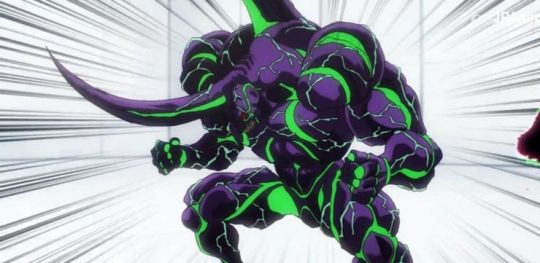
Dr. Genus showed up as a decent reprobate on this rundown, and presently his #1 crony, Carnage Kabuto, goes along with him. However he’s a beast power contender, Carnage Kabuto is quite interesting and great to see. He hasn’t set foot outside the House of Evolution HQ yet, however, Saitama and Genos make for fine guineas pigs.
Kabuto is as of now a beast, yet in frenzy mode, he’s genuinely unnerving! Also, exactly when it seems as though Saitama is hopeless, we understand that Saitama is disturbed about missing a Saturday-just deal! The pressure is broken in breathtaking style as the caped saint crushes Kabuto separated and clears out.
1.Worst: Crablante

Sequentially, this is the primary beast that Saitama confronted, while he was as yet a disappointed salaryman walking through life. In any case, the issue is that Crablante is just exhausting when you get over his senseless appearance. He is an upstanding lobster-man with enormous eyes, his middle sitting on human legs, complete with “tighty whities” clothing.
His demonstration of villainy? Menace a child with a goliath jaw. Ho murmur. The solitary intriguing part about this fight is that Saitama (being pre-exercise) turns into a legend through sheer boldness and kills this beast. Beneficial thing Saitama has much better adversaries to look at later on!
Visit our One Punch Man Jacket Collection to own your best jacket.
For all One Punch Man fans, how do you feel right now when completely reading this blog? Do you feel so excited to discover more about One Punch Man merch? Our store is here to suit both you need and your taste. Visit us to get everything you want.
Thanks For Reading Our Post. Hope You Enjoy and Have an Energetic Day.
0 notes
Text
Amdocs Voices
Since the pandemic, the world has stepped on the ‘tech- celeration’ peddle. ‘The Great Indoors’ podcast explores technology’s role in this new way of life.
*/ /*-->*/ /*-->*/
At the beginning of 2020, we in the Americas marketing team at Amdocs decided to embark on a podcast series. Podcasts have experienced something of a renaissance in recent years and from a marketing perspective, they can lead to fantastic conversion rates: they are cost-effective and are a great tool to foster brand loyalty. But they can also be tremendous fun and reach interesting audiences. After all, podcast listeners tend to be affluent, well-educated millennials and are highly engaged (*93% will listen to all or most of each episode.) *2019 Edison report.
So, we settled on the initial idea of a series focused on cloud computing and 5G monetization, both huge focus areas in the United States and amongst our customers. We also had a community of customers, press, analysts and industry personalities waiting to join us to entertain our audience about how they would transform the telecommunications landscape.
Then something happened! On January 30, the WHO declared the coronavirus a “public health emergency of international concern.” First to lock down were Europe, Asia and the Middle East. By the middle of March, Canada followed suit and by the end of March, 32 out of the 50 US states did so too. Quite literally overnight, the world had changed beyond recognition. We were locked indoors and the pandemic was the only talking point on the planet.
As a direct result, society began to undergo rapid change in the ways we were educated, where we work and how we are entertained. A wholesale cultural transformation was taking place in real time, all underpinned and accelerated by technology. And it was clear that the adoption of new technological behaviors in response to the pandemic had – in an instant – accelerated to levels that were not expected for many more years. The world had stepped on the ‘tech- celeration’ peddle and ‘The Great Indoors’ podcast series was born.
The series kicked off with renowned US analyst Chetan Sharma focusing on the brand of ‘technology.’ He related how in recent years, technology had been vilified with claims from various quarters that humankind was suffering as people (particularly children) were deemed to be spending too much timestaring at their screens, hanging out on social media with virtual friends and playing video games. Crazy conspiracy theorists even tried blaming the pandemic on the 5G rollout itself. The episode concluded that technology was undergoing a positive brand rebirth, with connectivity now the glue holding society together.
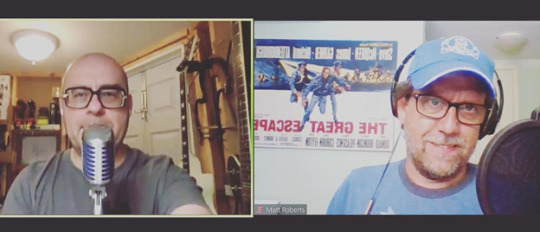
Alex Shiffrin CEO of LP/AD and Matt Roberts of Amdocs
By the conclusion of episode two with Anthony Goonetilleke, Amdocs CTO and Head of Strategy, we realized that something else profound was taking place: the ‘tech-celeration’ was touching every demographic rather than just typical tech-focused cohorts. Anthony related with astonishment how his mother was now happily embracing digital online banking, not because she wanted to, but she had to. He called it “the democratization of digitalization”.
Globally, most people were now working from home, being educated from home, shopping from home and banking from home. A recent Mckinsey study indicated that during this time, we have vaulted forward in consumer and business digital adoption by five years in a matter of an eight-week timeframe. Online shopping in the USA showed ten year’s growth in three months. In banking, the Economist noted that the share of cashless transactions worldwide had jumped to levels that they had only expected to see in five years. In healthcare and medicine, The New York Times interviewed a British doctor who stated that the National Health Service had undergone a decade of change within a week, as doctors switched to remote consultations.
Combined with the results of a US survey we had just commissioned at that time, Anthony then discussed how these observations shone further light on the seismic wave of digital disruption, behavioral change and the way it was directly impacting all elements of society. Specifically, the survey found that US consumers cared more about the quality of their connectivity than ever before.
From here, we branched into several different directions. In our third episode, we were joined by Vicky Sleight, head of diversity and inclusion at TM Forum, who discussed how the lockdown and working from home were challenging gender stereotypes, and how diversity was now more important than ever if companies were going to make it through the pandemic. In episode four, we discussed the digitalization of marketing and the virtualization of industry events with Alex Shifrin, CEO of LP/AD, who spoke about the messages that consumers were responding to and how they had clearly changed. A key observation was that the placement and positioning of these messages were now almost exclusively digital.
Episode five was a fun experiment and the adage of “never work with animals and children” was challenged, as my three daughters joined the podcast to talk about how they were adapting to virtual education. They opened up to how they now used videoconferencing platforms such as Teams and Zoom, and how cloud-based applications like Google Drive and Google classroom were now a part of their everyday lives. And while their computer literacy had been propelled by the pandemic, we couldn’t get away from the clear fact they missed physically interacting with their friends and weekly school spectacles like Pizza Day.
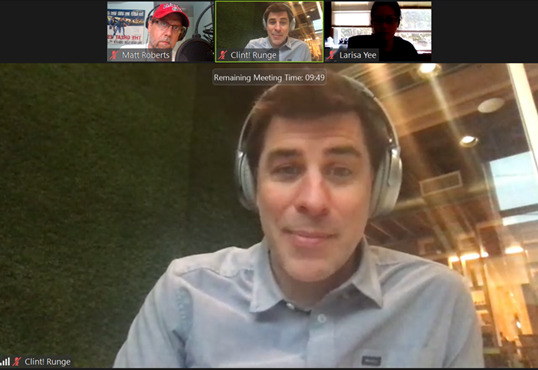
Clint! Runge
Yet in stark contrast to the more fortunate of us, the episode clearly demonstrated that a digital chasm had opened. We turned to the lack of access to high-speed internet for many of the world’s children, as well as the inability of disadvantaged families to afford the basics to educate (and in some instances even feed) their children in the midst of a lockdown. We concluded that much work remains to be done for policymakers globally, and that this chasm seriously hinders the democratization that Anthony had mentioned earlier. We also discussed how this period had witnessed the unveiling of many unlikely heroes who were taking on governments and policymakers to try and address these issues. Marcus Rashford of Manchester United instantly springs to mind.
Episode six saw us considering even broader negative externalities, as we were joined by Dr Victoria Ngo, Associate Professor at CUNY Graduate School of Public Health and Health Policy. Dr Ngo had just concluded a study in New York that showed the extent of what she termed the “second pandemic” – that of mental health. In a sobering conversation, she revealed how COVID-19 had seen a doubling of mental health illness. We discussed that the most prominent recommendation from the WHO to alleviate mental health illness was to harness connectivity to maintain regular contact with friends and family, with the conclusion that cell phones are essential to preventing or lessening mental health issues.
But my favorite episode – to date – has been episode 7 with Nick ‘Fitzy’ Stevens. For those not familiar with him, Nick is a sports broadcaster who hails from the Boston area, and is popularly known as a Patriots superfan. He has also appeared in Verizon 5G TV commercials with natural comic talents that complement his undisputed sports knowledge. In this episode, he discussed the return of sports to our TV screens, albeit with artificial sound and no live spectators. Yet still, technology was enabling a glimpse of normalcy in society. We also spoke about the future of the sporting experience, including the effects of 5G-enabled stadiums – peppered with anecdotes from Nick’s knowledge of antiquated English sporting terms. (listen to the Challenge Fitzy section of the podcast!)
For episode 8, we were joined by Clint! Runge, on the topic of Generation Z. Clint! a Gen-Z expert discussed the burden of pandemic on this demographic cohort. He related how Gen-Z, who as the first ‘digital natives’, are the first demographic to be born into the smartphone age, yet as such, are more negatively affected by the pandemic than any other group in society.
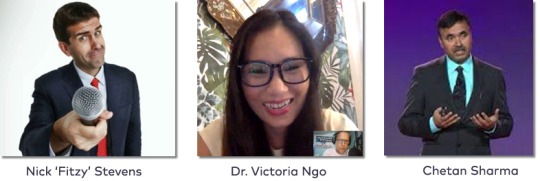
It took nine long years before the isolation of the measles virus in 1954 and the licensing of a vaccine. The world had to wait 20 years before early trials of a polio vaccine and its first American license in 1955. Now only twelve months since the identification of Covid-19, several vaccines are ready to be deployed around the globe. It seems that it is not only the tech sector that has undergone a rapid acceleration. It has given us a light at the end of this tunnel.
So, what’s next?
The Great Indoors will return as a global edition in early 2021, with some fantastic guests, and in the next series of episodes, we’ll examine what has disappeared forever, what will revert to pre-pandemic normals and where innovation is accelerating the digital transformation. For example, there are companies who are already busy building new tools that will improve the experience of online working, online education, enhance the virtual retail world and provide new experiences from virtual conferences to virtual socializing.
At Amdocs, our mission is to progress society and enrich lives. There is no going back to 2019 and the world will look very different in 2021. It is these differences – reflected in society and empowered by technology – that we look forward to discussing on the Great Indoors in 2021.
*/ /*-->*/ /*-->*/
next steps
podcast series
The Great Indoors
How technology is progressing society and enriching lives
csr
Amdocs Corporate Social Responsibility
Enriching lives and progressing society
published first on https://jiohow.tumblr.com/
0 notes
Text
Lúcio totally had polio hear me out
here are a compilation of my “Lúcio with polio” talks with people
i am Ricky
First polio talk
Evan:
you guys
what if he had polio as a child
Ricky:
oh dang do go on
i could imagine that being a thing in some favelas but lucio would be the only one unlucky enough to
get it in his favela as a kid
the entire favela pitching in to get him a wheelchair
Evan:
I mean, polio actually doesn't result in paralysis that often, apparently?
Ricky:
If we're talking about poliomyelitis
Evan:
yep
Ricky:
About 0.5 percent of the cases do have muscle weakness which usually involves the legs
And most people fully recover, but far from all
Evan:
Outcome Proportion of cases[1]
No symptoms 72%
Minor illness 24%
Nonparalytic aseptic
meningitis 1–5%
Paralytic poliomyelitis 0.1–0.5%
— Spinal polio 79% of paralytic cases
— Bulbospinal polio 19% of paralytic cases
— Bulbar polio 2% of paralytic cases
from wikipedia, but the data is sourced from the cdc and I checked it
everyone had polio. lucio was the lucky fuck who got spinal polio
Ricky:
and like he'd never fully recover from it? so that he'd regain some strength and control over his muscles but his muscles would be like
permanently weakened
Evan:
yes
that's why he's got them weirdass leggies
cause they're actually augmented so he can actually do shit
Sleigh:
;_;) i love this
Evan:
and the skates are a bonus to make him require less effort to move
Ricky:
But him still having his own legs and that his leggies are only armour that respond to his muscle movements and enhances them?
Like through electrode bullshit I dunno
Evan:
I was thinking that, yeah, cause his legs are pretty bulky compared to his upper body
I mean, they do have completely prosthetic limbs, so they have the technology™
also, Genji Shimada lol
Sleigh:
*handclap emoji*
Ricky:
Genji's a walking example of They Have The Technology™
What if
During a mission or some shit I dunno
Sombra would hack him, just to disable his amplifier and crossfade
and she'd be shocked to see Lúcio just collapse and she'd probably react like "oh shit fam u ok"
Sleigh:
NOO omg
Ricky:
LÚCIO BEING DISTRESSED AT HIS LEGS SUDDENLY NOT WORKING
Sleigh:
NO stop
This is... Too much
Ricky:
I'm s ORRYy,,,,
anyway
he'd just be on the ground trying to drag himself to safety, failing due to the fucking weight of his armour
Sleigh:
Ooh boy
Ricky:
and Reinhardt would just slam down his shield like "GET BEHIND ME" and protect the little froggo
so that someone could help him out of harms way and they'd finish the mission
Sleigh:
Aw
-----------------------------------------
More polio Lúcio talks
Ricky:
dunno if anyone remembers the lucio with polio headcanon
the one where he has a wheelchair and shit
but
what if he'd keep the polio thing strictly secret for the longest time
Sleigh:
I rememebe
I always think about it tbhhh
gabrielreyes:
I don't but I have a need
Sleigh:
ok but like i have a gencio rp and it keeps me alive
Ricky:
like he would try to not be seen in his wheel chair, like only a few select people like mercy, tracer and hana would know maybe?? and
Sleigh:
yes
Ricky:
like, he'd always be the first one to arrive to breakfast and the last one to leave, always the first one to sit down at debriefing meetings
Eu:
oh man
this sounds like it has feels
Sleigh:
YELLS
gabrielreyes:
Wait... How does he hide it?
Ricky:
and noone would think it was weird until he was forced to walk/stand for longer than he was used to and he'd jst kind of
gabrielreyes:
Oooh
Ricky:
well i'm glad u asked
spinal poliomyelitis brings muscle weakness and sometimes paralyze the victim, mostly children
Sleigh:
If you search polio you can find it in the history
Ricky:
and most people recover fully, but our thought here was that lucio would have recovered a lot of his muscle strength and control, but far from all
so he'd usually have a wheel chair but he'd be able to walk and stand for short distances and smol periods of time
Ricky:
but my thought here is that he'd one day have to walk a fair distance and he'd try but eventually his legs would just kind of give out and he'd fall
and people would crowd around him asking if he was okay and he'd just kind of "so uh i have something to tell y'all, lena can you get my chair pls"
and he'd sit everyone down and explain that as a kid in the favela he had had spinal polio and it basically fucked up his muscle strength and control from his waist down
Sleigh:
Yesss
Ricky:
what if he'd try his damndest to keep it a secret from 76, winston and genji though
bc he'd be afraid that 76 and winston would kick him out if they knew????
also genji being a fucking ninja can't possibly want to hang out with someone that can't stand up for longer than three minutes
gabrielreyes:
Aww
------------------------------------------------
More polio Lúcio talks
Ricky:
Polio lucio headcanons coming in
I had a thought that Lúcio probably loves being outside and he'd love to watch Genji and/or Hanzo climb the cliffs around Gibraltar
But he'd be jealous bc he couldn't even walk up a hill and the roads to the highest points of the watchpoint were too steep for his wheelchair to handle
So what if Genji one day would just "Get on my back and hold on tight" and when Lúcio was holding himself securely on his back he'd break into a sprint and climb up the cliff wall with Lúcio on his back
Like imagine Lúcio screaming with glee and excitement
Like he'd probably be able to use his augmented armour and stuff to get up the hills but Genji would want him to experience climbing even though he wasn't climbing himself? And maybe he didn't like to wear his armour outside of gigs or battle
gabrielreyes:
-lucio clinging like the frog boy he is-
but omg that's so cute im in pain
5 notes
·
View notes
Text
Annotations on “The Wrong Stuff” (S4E7)
Historical notes:
In theory, you could transfuse blood from a chimpanzee to a human, provided they have the same blood type. But there’s a risk of the body thinking the animal blood is foreign and attacking it. A surgeon once tried linking a baboon to a boy during surgery, transfusing blood from the baboon to the boy to keep him alive, but it didn’t work.
They say the launch will be on January 27, but Mercury-Redstone 2 didn’t actually launch until January 31, 1961.
Chuck Yeager was at Edwards Air Force Base during the early 1950s.
The scientist says that one in four test pilots died. This is about right, since the mortality rate for test pilots was 23 percent.
Things improved somewhat for primate research after this episode. In 1996, the National Institutes of Health put a moratorium on breeding chimps for research after many were bred for AIDS research.
Primate research wasn’t used for developing the iron lung. Rather, the primates were used for developing the polio vaccine. Dogs were used in the process of the discovery of insulin, not primates. If anything, primate research didn’t really take off until the 1980s- here’s a timeline if you want to read about that kind of thing.
Commentary below the cut:
Why, oh why, couldn’t they have kept Sam in the astronaut suit? Some Scott sighers like this episode because you can see most of him in that diaper, but it doesn’t do anything for me.
Sam says he has a Nobel prize in physics.
Al is all excited about this leap because OMG SPACE! Sam is pissed off about this leap because he’s in a diaper.
Al was on one of the Apollo missions, circumnavigating the moon and reading from Genesis on Christmas Eve.
Sam is very sarcastic in this episode because he’s that cranky.
Al says he smokes Chavello cigars.
The stock footage in this episode feels kind of out of place- lots of footage of failed rocket launches.
Al’s been to Disneyland and puked on the teacups.
They have a point about animals dying in space, though- look at what happened to Laika.
Flying noodle kick strikes again!
What a dignified way to transport someone- lying all sprawled out on a cart.
When is five thousand pounds to the head a good idea, ever? And it’s in the red zone too!
A monkey is threatening Dr. Winger with a gun!
Ew. Cory took off her diaper.
I bet one of the rare days Scott had off was while this episode was being shot. There’s a long stretch where he isn’t around at all.
I’m surprised Sam didn’t think of trying to take the Jeep.
Cory is number 63.
Plenty of shots of Sam’s eyes in this episode.
There’s a blooper from this episode where Dean complains about Scott kissing Cory. “Don’t get carried away! Jesus!”
2 notes
·
View notes
Text
Christmas2018: A tour to an Enchanting Celebration Event by Let’s Nurture Family filled with Love and Joy
HO….HO….HO….
We wish you a Merry Christmas,
We wish you a Merry Christmas,
We wish you a Merry Christmas;
And a Happy New Year!!!

Having Christmas at the end of the year is the best possible thing we could have to conclude it in the most joyous way. #Christmas2018 celebrations at Let’s Nurture were even bigger and better than the previous ones.
Let’s Nurture, a leading Mobile App Development Company with over ten years of experience in providing custom mobile applications across the globe, celebrated Christmas by doing skill development activities followed by team lunch session which kick-started multiple events of celebrations filled with joy, enthusiasm, surprises and most importantly unity.

Celebration Kick-off:
Our whole offshore development center in Ahmedabad was decorated on Christmas eve to make it ready for Christmas. The goal was to bring a feel-good factor and positivity for every employee when they pop into the office the next day. And guess what, it worked perfectly!!
Skill Development Activities:
As it was meant to be a skill improvement day too, the first couple of hours were spent on skill improvement activities.
React Native Session for Mobile (Android & iOS) Teams:
iOS and Android development team had a presentation on Mobile React Native by our own employee, where the team researched and explored more about the performance, reduced development costs and time, animations, Code Reusability, Improved UI/UX and much more regarding cross-platform application development.
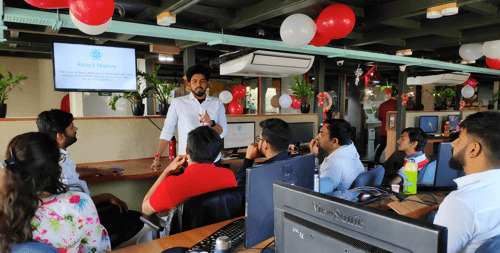
Razor Payment Gateway Integration for Website Developers:
The Web development team had a presentation on how to empower business with all the right tools to accept online payments and provide best customer experience.
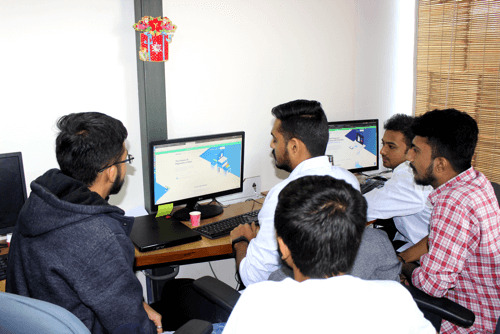
Events:
Creating a special set of events with perfect implementation requires a great set of skills, which Let’s Nurture tries to create on every month. As we believe, “The biggest room in the world is the room for improvement”- every employee from web team, iOS development team, mobile app development team, design team, digital marketing team, and sales team showed equal participation.
The team of business analysts was the catalysts in deciding the flow and celebration events. The management team and delivery head also helped the BA team to come up with the whole set of new ideas, which allowed everyone on the floor to showcase their hidden talent.
With a perfect plan in place, it was meant to be a success where teamwork, ideas, execution, happiness, joy- all these words meant one thing only- Let’s Nurture Family.
Communication Gap:
This is something we used to play a lot during our childhood. The whole Let’s Nurture family was divided into 6 groups. Each group was given a topic, the team was queued in a line facing the same direction. A topic or theme is given to the first person in the queue. The first person then calls the next one to turn around and performs the act with gestures and postures without uttering a word without anyone else’s involvement. Then in this order, the act performed by the first one in the queue was meant to be conveyed to the last one in the queue. The event will be judged how accurate the last person acts compared to the first person.
The whole event was to improve the communication gap amongst the team members. Apparently, it turned out to be an event full of smiles and happiness.
Newspaper Event:
The newspaper was a theme based event as well. We had 6 groups and the themes given are as follows:
Group 1: Life of a Woman
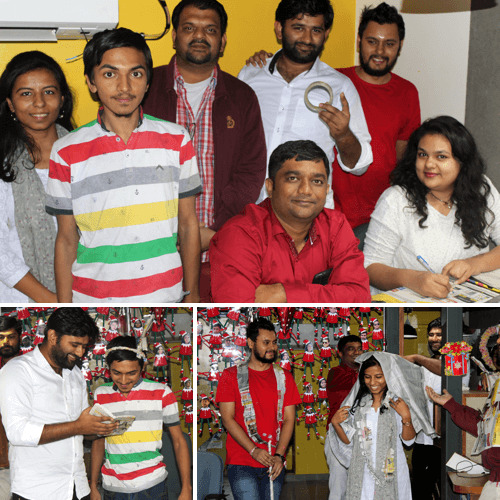
The presentation was all about the life of a woman. A woman is the root of every human being. She plays many roles during her life from a baby, then a daughter to a bride and ending up as a mother and grand maa. So save the girl child and Let her live!! joy, enthusiasm, surprises and most importantly unity.
Group 2: Indian Wedding

This theme was all about a wedding of an Indian girl and the purpose of the act was to take an initiative to stop social evil disguised as dowry in the country.
Group 3: Rock Band Theme

People only salute the rising sun, no salutation is offered at sunset. Likewise, people only give importance to a person only when he is successful and wealthy. When the same person, experiences a failure, surrounding people ignore him and stop giving importance. Sometimes their closed ones also stop caring that leads a person, believed to be a rock star, into loneliness, depression, drug addiction, etc. But there is always someone in your life, that will be standing beside no matter how worse is the situation and make you stand-up back.
Group 4: School Life
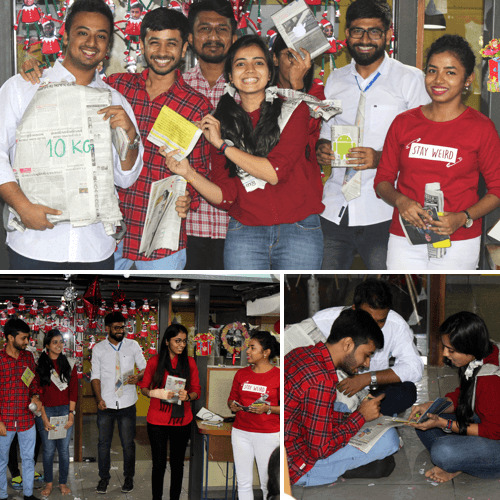
Talent lies everywhere. Whether it’s a village school student or city school student, everyone can excel in their careers or studies by their own capabilities and caliber. The group presented the School life in villages and town and showed us the reason why everyone is equal and can excel no matter from where they came from.
Group 5: Village Life
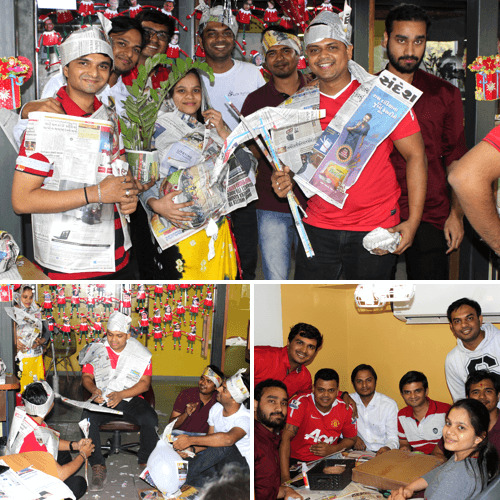
The title “Life in a Village” was bifurcated in two types which are apparent in the 21st century. The village without the technology implemented, which many of the villages in India are experiencing still. And the village with the smart solutions implemented. The message was clearly explained to government influencers and corporates to improve the life of people who are still in dire need of technology and innovations. joy, enthusiasm, surprises and most importantly unity.
Group 6: Kaun Banega Crorepati (KBC)

The team conveyed the social message- “Please give polio vaccination to children below 5 years to avoid polio disease.” The second message was “The correct place of garbage is in dustbin not on roads and parks. Please make sure your surroundings are hygiene and contribute to Swachh Bharat Mission”.
Where everyone had to come up with a presentation by only using newspaper and justify the topic that was provided. Each group came up with so much creativity, and many hidden talents were revealed.
The performance was judged by Mr. Jay Shah and our Head of HR department. The results were judged based on four key parameters-
– Team involvement joy, enthusiasm, surprises and most importantly unity.
– Dialogue and Direction
– Props and their usage
– Social Message
All the teams participated performed brilliantly given the time constraints. Based on the topics, the mood was already set from the first to the last act. The real festive feeling was being felt inside out. This newspaper event has been the best Let’s Nurture family has seen over the years. The results for this event were declared based on the parameters given above with appreciation to all participating teams, the winners and runners-up.
Secret Santa:
The most awaited, anticipated and surprising event was “Secret Santa”. It was an event in which the whole family exchanged Christmas presents anonymously. Moreover, it was fun, we all received surprising gifts from Secret Santas.

Team Lunch sponsored by PMs,TLs and Delivery Head:
Let’s Nurture management team exactly knows how to appreciate its employees. The organization has never failed to nurture its employees in any aspects. So, this time all the TLs, PMs and the Delivery Head decided to host a lunch to the entire family in order to thank them back for all those efforts the entire team has shown in the year 2018. So, for the very first time, the whole family had delicious ‘Totha and Bread’ as lunch together. It was such an amazing moment.
Cake Cutting:
On every skill improvement day, Let’s Nurture celebrates birthdays of its employees who were born in the same month, but this time our Delivery Head thought of making this Christmas more merry and happening. So, few Sagittarius and Capricorn celebrated their birthdays by cutting homemade Donuts brought by our delivery head.
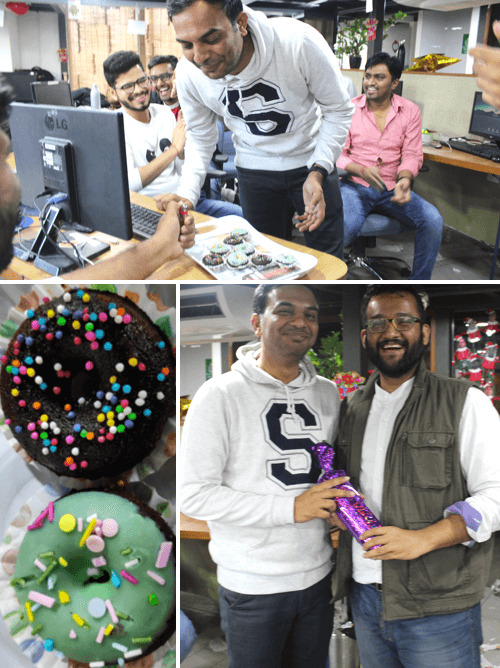
Marathon Runners at Let’s Nurture:
Few jewels of Let’s Nurture who have been there with Let’s Nurture through thick and thin for more than 5 years, without whom LN couldn’t have achieved the same level and position it is having right now, were honored them with tokens of love.

Every good thing comes to an end. With the Christmas season in full flow, New Year’s Eve is right around the corner. But let us cherish love and happiness while we are at it.
Hope you enjoy reading this Christmas celebration post as much as we enjoyed the day. So, if you want to experience those funful events in a corporate world and get the feeling of being with a family at the workplace, join our team. We would love to welcome you all.
vimeo
#Christmas#Christmas2018#celebration#Events#Games#Skill development#Mobile app development company#LetsNurture
0 notes
Text
Reliving a Deadly Day at a U.N. Compound in Mogadishu
The blast wave thundered through the compound, ripping the expletive on my lips in two and cramming half of it back down my throat. The radio-room supervisor, Hassan Osman, and I stumbled to the balcony. In that cathedral-quiet moment between the detonation of the car bomb and the staccato barrage of gunfire, we knew they were coming. Shabab militants were storming the compound, squeezing off bursts from the Kalashnikovs at their hips, leaping the gate’s smoking wreckage. It was June 19, 2013.
“Dewaine. Dewaine.” Hassan’s voice was steady, his hand on my shoulder. “Do the public announcement.”
Over the P.A., I instructed the several dozen United Nations staff members to duck and cover and then tried to figure out what to do next. With every rifle crack, my world flashed in a monochrome of stark, tactical decisions, like life and death reduced to their lowest common denominators. Even in the moment, the irony of stumbling into my first firefight more than a decade after leaving the Marine Corps was not lost on me. Since leaving the military, I’d grown used to my buddies shaking their virtual heads, via social media, at the fundamental insanity of inserting yourself into war without having the good sense to engage in combat.
Mogadishu was a study in violent coexistence, a brutal ecosystem where new conflicts sprouted up without ever quelling the old. The Somali capital’s recent history included warlords, the Islamic Courts Union, the Ethiopian military, the Shabab and a shaky Western-backed government. This attack on the United Nations Common Compound — 10,000 square meters split between offices and living quarters, just off Mogadishu’s airport road — felt like the city’s fiercest predator had finally decided to take our measure.
After the initial blast, our Somali guards immediately returned fire, dropping the first two Shabab gunmen who came through the breach. Between clipped radio transmissions from the African Union Mission and the Somali government, four more militants unhesitatingly charged over the bodies of their companions. The guards’ gunfire funneled the attackers onto the accommodation side of the compound.
Under cover of suppressive fire from the towers, several of the guards and I leapfrogged the buildings on the accommodation side to herd staff members to the safe rooms on the opposite end of the compound. Pulling back the bolt on the office Kalashnikov to reveal brass bolstered my courage before our mad dash through the compound, but it was the valor and tenacity of our Somali allies that actually saved lives.
Mogadishu left a permanent scratch on my heart, but talking about the attack remains difficult. I’ve never wanted to risk implying that I’d done more than I did, or to say what I really feared: that I hadn’t done enough. The Shabab murdered 15 civilians, aid workers and contractors at the compound that day, including four of our Somali guards.
In Mogadishu, I led a United Nations Department of Safety and Security office consisting of three other international field security coordination officers — a Russian, a Ugandan and a Bulgarian — and about 20 local advisers, drivers and radio operators. Save for an unauthorized Chinese-made Kalashnikov, purchased by one of my predecessors and handed down to every senior field security coordination officer since, we were armed with nothing more than our wits.
For armed security, we depended on a Somali-owned private security company and the host government, with whom we carried out United Nations program delivery — agriculture and sanitation projects, polio monitoring, shelter programs — in and around the city. Armed security arrangements with private companies tend to unnerve humanitarians, who rightly worry about violating the principles of their profession. But my four postings with the United Nations taught me that in areas of conflict you could have a clean humanitarian conscience or deliver aid, but rarely both. Despite the inherent tension between United Nations agencies and the armed entities they relied on, our security system in Mogadishu worked. My team got aid personnel to some of the toughest locations in and around the capital.
I fell right in with my Somali security counterparts. I chewed bitter khat, a leaf with effects similar to amphetamine, with these guys, screeched through Mogadishu’s 17 districts behind their escort vehicles, and kicked up red dust while waiting for them during prayer stops on the roads to towns so recently vacated by the Shabab that you might still find the militants’ dirty dishes in the sink. Colonized but never broken, the Somalis were a wiry, arrogant and daring people for whom friendship ran deep. For all of Somalia’s trouble, I met fewer dispirited men in Mogadishu than I did in Manhattan.
After the attack, the personnel based at the compound, including me and the other foreign staff members on my team, relocated to the United Nations’ main compound in Somalia on the sprawling grounds of Mogadishu international airport. Protected by Ugandan and Burundian troops, displaced internationals could now join the mission staff, hacks, military officers and contractors who converged at the United Nations Mine Action Service’s “Little Kruger Bar” — foreigners with faces crimsoned by alcohol and the sun, many of whom could spend the weeks in country without ever leaving the airport or speaking to a Somali.
The new mission in Somalia was officially established only two weeks before the attack and had barely started moving into the compound on the grounds of the Mogadishu airport. The United Nations’ only unified radio room in Mogadishu — which maintained contact with its humanitarian and development convoys throughout the area — remained at our now-abandoned compound. I knew I couldn’t ask Hassan and his fellow radio operators to return to work at the hollowed-out buildings of an organization that the Shabab claimed were thwarting “Allah’s Law on earth & must therefore be dislodged.” But when I conducted my morning radio check from within the airport grounds the next day, it was Hassan’s voice that responded.
“Sierra 1, this is Mike Sierra Base, you’re five by five.”
In “War Games: The Story of Aid and War in Modern Times,” the journalist Linda Polman says that “the job of humanitarian aid worker is No. 5 on the Top 10 list of dangerous occupations, after lumberjack, pilot, fisherman and structural iron- or steelworker. It’s the only job on the list where most of the fatalities are caused by intentional violence.” From Chechnya to Dadaab refugee camp to Mogadishu to Gaza, I consistently found that most of this risk is borne by local staff — the polio-vaccination monitors, the convoy drivers, the project officers, the guards and the radio operators — who make up the backbone of international aid organizations.
Yes, the average international aid worker in Somalia is there to do good, but also (whether admittedly or not) for the buzz of life in a conflict zone. We decided to leave our own countries to be in Mog, were paid good money to be there and had our careers enhanced as a result. The risk for someone like Hassan — paid a fraction of our salaries in the town where all his family lived and the entire community knew he worked for the United Nations — differed on a galactic scale. Born and raised in Mogadishu, Hassan drew from the same wellsprings of hope and despair as the militants who rushed into certain death at the compound. But there are no Gettysburgs or Omaha Beaches for people like him — no heroic charge with his comrades by his side — nor even a decisive Alamo-style defeat. Nevertheless, men like Hassan resolve to endure.
As weeks turned into months, Hassan never mentioned that he reported to work every day in the place the foreign staff had evacuated. Or how the United Nations field operations that couldn’t discontinue without people dying would cease if not for his crew’s tracking our convoys and keeping our communications running. They knew the risk of working in the highly exposed compound of an organization that the Shabab referred to as “a merchant of death & a satanic force of evil.” Hassan and his crew exhibited grace under the most dangerous of circumstances and never felt the need to bring it up. I guess danger ceases to be an interesting topic after you’ve committed to facing it.
Occasionally, something — unexpected fireworks or the pressure wave from subwoofers at a concert — thrusts me back into that day, five years gone. When it happens, I crowd out the image of Shabab fighters storming our compound with those of Hassan and the other Somalis I worked with in Mogadishu, women and men who exemplified Plato’s definition of courage, “endurance of the soul.”
Courage is more than the charge.
Dewaine Farria is a former Marine and present M.F.A. candidate at the Vermont College of Fine Arts who served as a United Nations field security officer in East Jerusalem, Somalia, Kenya and the Russian North Caucasus. He received the United Nations Department of Safety and Security’s Bravery Award for his actions during the attack in Mogadishu.
Sign up for our newsletter to get the best of The New York Times Magazine delivered to your inbox every week. For more coverage of conflict, visit nytimes.com/atwar.
The post Reliving a Deadly Day at a U.N. Compound in Mogadishu appeared first on World The News.
from World The News https://ift.tt/2HHDK7U
via News of World
0 notes
Text
Reliving a Deadly Day at a U.N. Compound in Mogadishu
The blast wave thundered through the compound, ripping the expletive on my lips in two and cramming half of it back down my throat. The radio-room supervisor, Hassan Osman, and I stumbled to the balcony. In that cathedral-quiet moment between the detonation of the car bomb and the staccato barrage of gunfire, we knew they were coming. Shabab militants were storming the compound, squeezing off bursts from the Kalashnikovs at their hips, leaping the gate’s smoking wreckage. It was June 19, 2013.
“Dewaine. Dewaine.” Hassan’s voice was steady, his hand on my shoulder. “Do the public announcement.”
Over the P.A., I instructed the several dozen United Nations staff members to duck and cover and then tried to figure out what to do next. With every rifle crack, my world flashed in a monochrome of stark, tactical decisions, like life and death reduced to their lowest common denominators. Even in the moment, the irony of stumbling into my first firefight more than a decade after leaving the Marine Corps was not lost on me. Since leaving the military, I’d grown used to my buddies shaking their virtual heads, via social media, at the fundamental insanity of inserting yourself into war without having the good sense to engage in combat.
Mogadishu was a study in violent coexistence, a brutal ecosystem where new conflicts sprouted up without ever quelling the old. The Somali capital’s recent history included warlords, the Islamic Courts Union, the Ethiopian military, the Shabab and a shaky Western-backed government. This attack on the United Nations Common Compound — 10,000 square meters split between offices and living quarters, just off Mogadishu’s airport road — felt like the city’s fiercest predator had finally decided to take our measure.
After the initial blast, our Somali guards immediately returned fire, dropping the first two Shabab gunmen who came through the breach. Between clipped radio transmissions from the African Union Mission and the Somali government, four more militants unhesitatingly charged over the bodies of their companions. The guards’ gunfire funneled the attackers onto the accommodation side of the compound.
Under cover of suppressive fire from the towers, several of the guards and I leapfrogged the buildings on the accommodation side to herd staff members to the safe rooms on the opposite end of the compound. Pulling back the bolt on the office Kalashnikov to reveal brass bolstered my courage before our mad dash through the compound, but it was the valor and tenacity of our Somali allies that actually saved lives.
Mogadishu left a permanent scratch on my heart, but talking about the attack remains difficult. I’ve never wanted to risk implying that I’d done more than I did, or to say what I really feared: that I hadn’t done enough. The Shabab murdered 15 civilians, aid workers and contractors at the compound that day, including four of our Somali guards.
In Mogadishu, I led a United Nations Department of Safety and Security office consisting of three other international field security coordination officers — a Russian, a Ugandan and a Bulgarian — and about 20 local advisers, drivers and radio operators. Save for an unauthorized Chinese-made Kalashnikov, purchased by one of my predecessors and handed down to every senior field security coordination officer since, we were armed with nothing more than our wits.
For armed security, we depended on a Somali-owned private security company and the host government, with whom we carried out United Nations program delivery — agriculture and sanitation projects, polio monitoring, shelter programs — in and around the city. Armed security arrangements with private companies tend to unnerve humanitarians, who rightly worry about violating the principles of their profession. But my four postings with the United Nations taught me that in areas of conflict you could have a clean humanitarian conscience or deliver aid, but rarely both. Despite the inherent tension between United Nations agencies and the armed entities they relied on, our security system in Mogadishu worked. My team got aid personnel to some of the toughest locations in and around the capital.
I fell right in with my Somali security counterparts. I chewed bitter khat, a leaf with effects similar to amphetamine, with these guys, screeched through Mogadishu’s 17 districts behind their escort vehicles, and kicked up red dust while waiting for them during prayer stops on the roads to towns so recently vacated by the Shabab that you might still find the militants’ dirty dishes in the sink. Colonized but never broken, the Somalis were a wiry, arrogant and daring people for whom friendship ran deep. For all of Somalia’s trouble, I met fewer dispirited men in Mogadishu than I did in Manhattan.
After the attack, the personnel based at the compound, including me and the other foreign staff members on my team, relocated to the United Nations’ main compound in Somalia on the sprawling grounds of Mogadishu international airport. Protected by Ugandan and Burundian troops, displaced internationals could now join the mission staff, hacks, military officers and contractors who converged at the United Nations Mine Action Service’s “Little Kruger Bar” — foreigners with faces crimsoned by alcohol and the sun, many of whom could spend the weeks in country without ever leaving the airport or speaking to a Somali.
The new mission in Somalia was officially established only two weeks before the attack and had barely started moving into the compound on the grounds of the Mogadishu airport. The United Nations’ only unified radio room in Mogadishu — which maintained contact with its humanitarian and development convoys throughout the area — remained at our now-abandoned compound. I knew I couldn’t ask Hassan and his fellow radio operators to return to work at the hollowed-out buildings of an organization that the Shabab claimed were thwarting “Allah’s Law on earth & must therefore be dislodged.” But when I conducted my morning radio check from within the airport grounds the next day, it was Hassan’s voice that responded.
“Sierra 1, this is Mike Sierra Base, you’re five by five.”
In “War Games: The Story of Aid and War in Modern Times,” the journalist Linda Polman says that “the job of humanitarian aid worker is No. 5 on the Top 10 list of dangerous occupations, after lumberjack, pilot, fisherman and structural iron- or steelworker. It’s the only job on the list where most of the fatalities are caused by intentional violence.” From Chechnya to Dadaab refugee camp to Mogadishu to Gaza, I consistently found that most of this risk is borne by local staff — the polio-vaccination monitors, the convoy drivers, the project officers, the guards and the radio operators — who make up the backbone of international aid organizations.
Yes, the average international aid worker in Somalia is there to do good, but also (whether admittedly or not) for the buzz of life in a conflict zone. We decided to leave our own countries to be in Mog, were paid good money to be there and had our careers enhanced as a result. The risk for someone like Hassan — paid a fraction of our salaries in the town where all his family lived and the entire community knew he worked for the United Nations — differed on a galactic scale. Born and raised in Mogadishu, Hassan drew from the same wellsprings of hope and despair as the militants who rushed into certain death at the compound. But there are no Gettysburgs or Omaha Beaches for people like him — no heroic charge with his comrades by his side — nor even a decisive Alamo-style defeat. Nevertheless, men like Hassan resolve to endure.
As weeks turned into months, Hassan never mentioned that he reported to work every day in the place the foreign staff had evacuated. Or how the United Nations field operations that couldn’t discontinue without people dying would cease if not for his crew’s tracking our convoys and keeping our communications running. They knew the risk of working in the highly exposed compound of an organization that the Shabab referred to as “a merchant of death & a satanic force of evil.” Hassan and his crew exhibited grace under the most dangerous of circumstances and never felt the need to bring it up. I guess danger ceases to be an interesting topic after you’ve committed to facing it.
Occasionally, something — unexpected fireworks or the pressure wave from subwoofers at a concert — thrusts me back into that day, five years gone. When it happens, I crowd out the image of Shabab fighters storming our compound with those of Hassan and the other Somalis I worked with in Mogadishu, women and men who exemplified Plato’s definition of courage, “endurance of the soul.”
Courage is more than the charge.
Dewaine Farria is a former Marine and present M.F.A. candidate at the Vermont College of Fine Arts who served as a United Nations field security officer in East Jerusalem, Somalia, Kenya and the Russian North Caucasus. He received the United Nations Department of Safety and Security’s Bravery Award for his actions during the attack in Mogadishu.
Sign up for our newsletter to get the best of The New York Times Magazine delivered to your inbox every week. For more coverage of conflict, visit nytimes.com/atwar.
The post Reliving a Deadly Day at a U.N. Compound in Mogadishu appeared first on World The News.
from World The News https://ift.tt/2HHDK7U
via Today News
0 notes
Text
Reliving a Deadly Day at a U.N. Compound in Mogadishu
The blast wave thundered through the compound, ripping the expletive on my lips in two and cramming half of it back down my throat. The radio-room supervisor, Hassan Osman, and I stumbled to the balcony. In that cathedral-quiet moment between the detonation of the car bomb and the staccato barrage of gunfire, we knew they were coming. Shabab militants were storming the compound, squeezing off bursts from the Kalashnikovs at their hips, leaping the gate’s smoking wreckage. It was June 19, 2013.
“Dewaine. Dewaine.” Hassan’s voice was steady, his hand on my shoulder. “Do the public announcement.”
Over the P.A., I instructed the several dozen United Nations staff members to duck and cover and then tried to figure out what to do next. With every rifle crack, my world flashed in a monochrome of stark, tactical decisions, like life and death reduced to their lowest common denominators. Even in the moment, the irony of stumbling into my first firefight more than a decade after leaving the Marine Corps was not lost on me. Since leaving the military, I’d grown used to my buddies shaking their virtual heads, via social media, at the fundamental insanity of inserting yourself into war without having the good sense to engage in combat.
Mogadishu was a study in violent coexistence, a brutal ecosystem where new conflicts sprouted up without ever quelling the old. The Somali capital’s recent history included warlords, the Islamic Courts Union, the Ethiopian military, the Shabab and a shaky Western-backed government. This attack on the United Nations Common Compound — 10,000 square meters split between offices and living quarters, just off Mogadishu’s airport road — felt like the city’s fiercest predator had finally decided to take our measure.
After the initial blast, our Somali guards immediately returned fire, dropping the first two Shabab gunmen who came through the breach. Between clipped radio transmissions from the African Union Mission and the Somali government, four more militants unhesitatingly charged over the bodies of their companions. The guards’ gunfire funneled the attackers onto the accommodation side of the compound.
Under cover of suppressive fire from the towers, several of the guards and I leapfrogged the buildings on the accommodation side to herd staff members to the safe rooms on the opposite end of the compound. Pulling back the bolt on the office Kalashnikov to reveal brass bolstered my courage before our mad dash through the compound, but it was the valor and tenacity of our Somali allies that actually saved lives.
Mogadishu left a permanent scratch on my heart, but talking about the attack remains difficult. I’ve never wanted to risk implying that I’d done more than I did, or to say what I really feared: that I hadn’t done enough. The Shabab murdered 15 civilians, aid workers and contractors at the compound that day, including four of our Somali guards.
In Mogadishu, I led a United Nations Department of Safety and Security office consisting of three other international field security coordination officers — a Russian, a Ugandan and a Bulgarian — and about 20 local advisers, drivers and radio operators. Save for an unauthorized Chinese-made Kalashnikov, purchased by one of my predecessors and handed down to every senior field security coordination officer since, we were armed with nothing more than our wits.
For armed security, we depended on a Somali-owned private security company and the host government, with whom we carried out United Nations program delivery — agriculture and sanitation projects, polio monitoring, shelter programs — in and around the city. Armed security arrangements with private companies tend to unnerve humanitarians, who rightly worry about violating the principles of their profession. But my four postings with the United Nations taught me that in areas of conflict you could have a clean humanitarian conscience or deliver aid, but rarely both. Despite the inherent tension between United Nations agencies and the armed entities they relied on, our security system in Mogadishu worked. My team got aid personnel to some of the toughest locations in and around the capital.
I fell right in with my Somali security counterparts. I chewed bitter khat, a leaf with effects similar to amphetamine, with these guys, screeched through Mogadishu’s 17 districts behind their escort vehicles, and kicked up red dust while waiting for them during prayer stops on the roads to towns so recently vacated by the Shabab that you might still find the militants’ dirty dishes in the sink. Colonized but never broken, the Somalis were a wiry, arrogant and daring people for whom friendship ran deep. For all of Somalia’s trouble, I met fewer dispirited men in Mogadishu than I did in Manhattan.
After the attack, the personnel based at the compound, including me and the other foreign staff members on my team, relocated to the United Nations’ main compound in Somalia on the sprawling grounds of Mogadishu international airport. Protected by Ugandan and Burundian troops, displaced internationals could now join the mission staff, hacks, military officers and contractors who converged at the United Nations Mine Action Service’s “Little Kruger Bar” — foreigners with faces crimsoned by alcohol and the sun, many of whom could spend the weeks in country without ever leaving the airport or speaking to a Somali.
The new mission in Somalia was officially established only two weeks before the attack and had barely started moving into the compound on the grounds of the Mogadishu airport. The United Nations’ only unified radio room in Mogadishu — which maintained contact with its humanitarian and development convoys throughout the area — remained at our now-abandoned compound. I knew I couldn’t ask Hassan and his fellow radio operators to return to work at the hollowed-out buildings of an organization that the Shabab claimed were thwarting “Allah’s Law on earth & must therefore be dislodged.” But when I conducted my morning radio check from within the airport grounds the next day, it was Hassan’s voice that responded.
“Sierra 1, this is Mike Sierra Base, you’re five by five.”
In “War Games: The Story of Aid and War in Modern Times,” the journalist Linda Polman says that “the job of humanitarian aid worker is No. 5 on the Top 10 list of dangerous occupations, after lumberjack, pilot, fisherman and structural iron- or steelworker. It’s the only job on the list where most of the fatalities are caused by intentional violence.” From Chechnya to Dadaab refugee camp to Mogadishu to Gaza, I consistently found that most of this risk is borne by local staff — the polio-vaccination monitors, the convoy drivers, the project officers, the guards and the radio operators — who make up the backbone of international aid organizations.
Yes, the average international aid worker in Somalia is there to do good, but also (whether admittedly or not) for the buzz of life in a conflict zone. We decided to leave our own countries to be in Mog, were paid good money to be there and had our careers enhanced as a result. The risk for someone like Hassan — paid a fraction of our salaries in the town where all his family lived and the entire community knew he worked for the United Nations — differed on a galactic scale. Born and raised in Mogadishu, Hassan drew from the same wellsprings of hope and despair as the militants who rushed into certain death at the compound. But there are no Gettysburgs or Omaha Beaches for people like him — no heroic charge with his comrades by his side — nor even a decisive Alamo-style defeat. Nevertheless, men like Hassan resolve to endure.
As weeks turned into months, Hassan never mentioned that he reported to work every day in the place the foreign staff had evacuated. Or how the United Nations field operations that couldn’t discontinue without people dying would cease if not for his crew’s tracking our convoys and keeping our communications running. They knew the risk of working in the highly exposed compound of an organization that the Shabab referred to as “a merchant of death & a satanic force of evil.” Hassan and his crew exhibited grace under the most dangerous of circumstances and never felt the need to bring it up. I guess danger ceases to be an interesting topic after you’ve committed to facing it.
Occasionally, something — unexpected fireworks or the pressure wave from subwoofers at a concert — thrusts me back into that day, five years gone. When it happens, I crowd out the image of Shabab fighters storming our compound with those of Hassan and the other Somalis I worked with in Mogadishu, women and men who exemplified Plato’s definition of courage, “endurance of the soul.”
Courage is more than the charge.
Dewaine Farria is a former Marine and present M.F.A. candidate at the Vermont College of Fine Arts who served as a United Nations field security officer in East Jerusalem, Somalia, Kenya and the Russian North Caucasus. He received the United Nations Department of Safety and Security’s Bravery Award for his actions during the attack in Mogadishu.
Sign up for our newsletter to get the best of The New York Times Magazine delivered to your inbox every week. For more coverage of conflict, visit nytimes.com/atwar.
The post Reliving a Deadly Day at a U.N. Compound in Mogadishu appeared first on World The News.
from World The News https://ift.tt/2HHDK7U
via Everyday News
0 notes